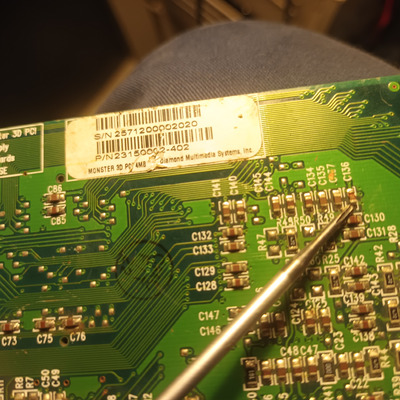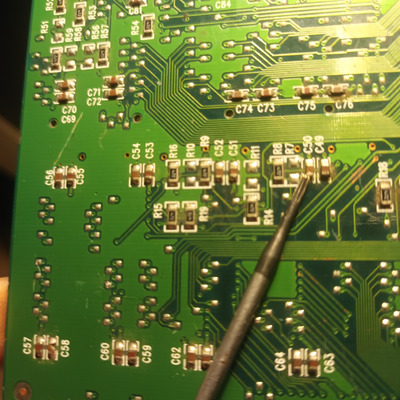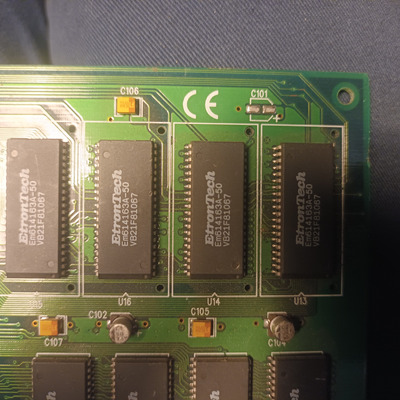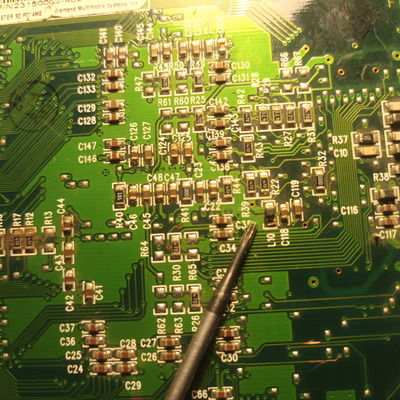First post, by hbsoftware
I salvaged this card from the junkyard, it was buried in a bigbag full of cards... on the front its missing a capacitor c101 but its easy to see from the pitch of the pads that its an electrolytic..99% sure its 10uf 16v .. now on the back things are worse...there are bad traces that i will fix , but the worse is that:
C50 and c57 are broken... L10 inductor is broken ...c136 slso broken... i searched for a schematic but no luck... can anyone guide me on to guesstimating some values for these parts??







